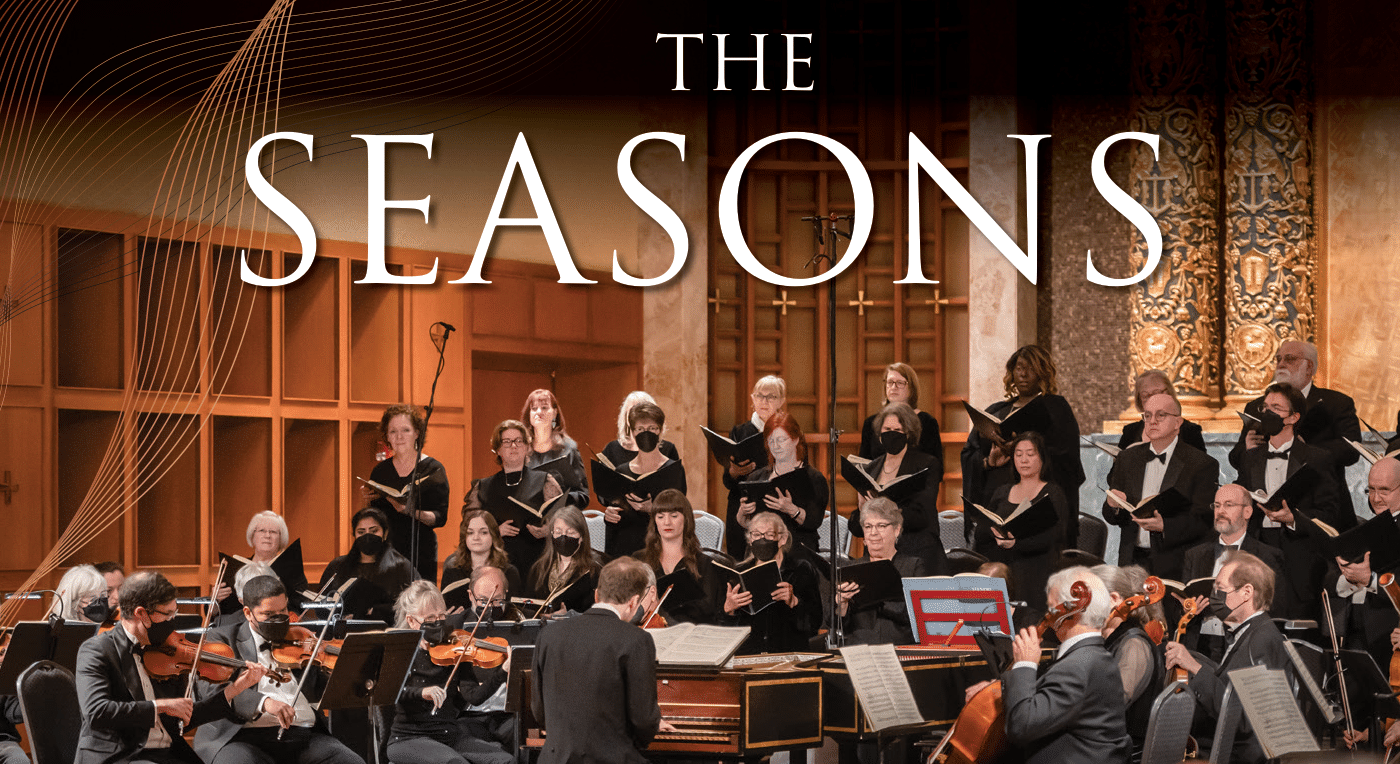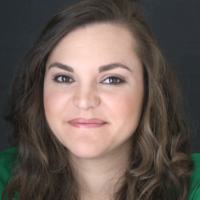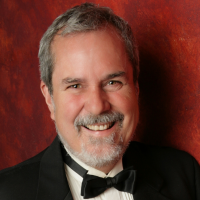
Saturday, November 11, 2023 • 7:30 p.m.
First Free Methodist Church (3200 3rd Ave W)
Harmonia Orchestra & Chorus
William White, conductor
Natalie Ingrisano, soprano
Katherine Goforth, tenor
Charles Robert Stephens, baritone
Program
Franz Joseph Haydn (1732 –1809)
Die Jahreszeiten, Hob. XXI:3
- full concert program (PDF)
About the Concert
Haydn’s last major work, The Seasons, is an operatic oratorio brimming over with hummable tunes and lively orchestration.
Plan to arrive early and join William White at 6:30 p.m. for a pre-concert talk.
Due to illness, Zach Finkelstein has been forced to withdraw from this performance. Harmonia is grateful to Katherine Goforth for stepping in on short notice to perform the role of Lukas.
Maestro’s Prelude
Dear Listeners,
It is my delight to welcome you to tonight’s concert, a program that contains just one work: Franz Joseph Haydn’s final oratorio, The Seasons.
The Seasons is, in many respects, a singular work in the oratorio repertoire: a secular piece written at a time when most choral works were sacred; a dramatic piece that contains named characters but no plot; a work formally structured as a collection of “choral symphonies” that could also be considered an opera in four acts. It is what it is, and it’s not quite like anything else.
The Seasons is also a compositional flex on Haydn’s part. Here’s what I mean: the text of this oratorio is vapid, even unto the point of goofiness. And that’s not just my opinion — it was Haydn’s opinion as well. He held this libretto in low regard, openly mocking it in letters that he wrote to friends and colleagues. Most of the text comes from a book-length poem written by an Anglo-Scottish poet in the middle of the 18th century, a poem that Oscar Wilde listed among his “books never to be read.”
So the flex is that Haydn took this libretto and turned it into over two hours of the most glorious music ever written. The key to his success, musically, is that he embraced the inherent turgidity of the source material: he leaned in and went wild. We’re all the richer for it, because this is an amazing piece full of good tunes, lively dances, musical jokes and symphonic moments that rival Beethoven’s in their impact.
Haydn’s joie de vivre in this music demands an interpretive approach to match, and that’s why we’re going all-in with the camp in our concert tonight. If you can’t have fun with The Seasons, you might as well not do it.
That attitude extends, dear listeners, even to you! The Seasons was composed prior to the invention of silence-between-movements, so if we want to experience this piece authentically (and I think we do) I would encourage you to clap at the conclusion of any number that inspires you to applaud. Tonight, we are not standing on ceremony.
— William White
P.S. The Seasons is a magnificent — yet seldom-performed — oratorio known and loved by a small yet special group of listeners (which we now hope includes you). The next Harmonia program is also devoted to a single oratorio, but one that we perform more than any other, one known and loved even by folks who rarely attend choral and orchestral concerts: Handel’s Messiah.
While Harmonia’s presentation of Messiah is not as overtly theatrical as tonight’s performance of The Seasons, it is most definitely the event of the holiday musical season. We play and sing every note that Handel composed and feature not one, but two harpsichords. Be sure to reserve your tickets today!
About the Soloists

Soprano Natalie Ingrisano performs as a soloist, chamber musician and professional chorister in the Pacific Northwest. Recent engagements include solo roles in Bruckner’s Requiem, Mozart’s Requiem, Couperin’s Leçons de Ténèbres, Handel’s Messiah, Charpentier’s Te Deum, Vivaldi’s Gloria, Magnificat and Vespers, the Monteverdi 1641 Vespers and Johann Ernst Galliard’s The Hymn of Adam and Eve, as well as Mahler’s Symphony No. 4 with the Northbrook Symphony. As a professional chorister she is a resident member of the Mägi Ensemble, frequently performs with the Emerald Ensemble, and in 2021 sang with The Benedict XVI for their inaugural season in San Francisco. Ms. Ingrisano received her Bachelor and Master of Music degrees from the Chicago College of Performing Arts at Roosevelt University and is a graduate of the Artist Diploma in Early Music program at Cornish College of the Arts. She recently finished recording her first solo album of Baroque music with harpsichordist Jillon Stoppels Dupree and frequently appears as a guest lead singer with the Celtic band The Beggar Boys and in a local Celtic trio.
- Learn more: natalieingrisano.com

American vocalist Katherine Goforth shares the “thrilling tenor power” (Opera News) of her “noble, colorful and iridescent vocal sound” (Magazin Klassik) in vivid character portraits and heartfelt performances that “[do] not hold back” (The New York Times). Katherine is the recipient of Washington National Opera’s inaugural True Voice Award for transgender and non-binary singers and the Career Advancement Award from the fourth Dallas Symphony Orchestra Women in Classical Music Symposium. Based in Portland, she has appeared extensively as a soloist with Pacific Northwest-based arts organizations, including Portland Opera, Bozeman Symphony, Walla Walla Symphony, Yakima Symphony, Vancouver Symphony Orchestra, Opera Bend, Opera Theater Oregon, Sound Salon, Artists Repertory Theatre, Fuse Theatre Ensemble and Pink Martini. Katherine was a member of the International Opera Studio of Oper Köln, received her Bachelor’s degree from St. Olaf College, her Master’s degree from the Juilliard School, and attended the Franz-Schubert-Institut, Britten Pears Young Artist Programme, Heidelberger Frühling Liedakademie, Georg Solti Accademia, and Boston Wagner Institute.
- Learn more: katherinegoforth.com

Baritone Charles Robert Stephens has enjoyed a career spanning a wide variety of roles and styles in opera and concert music. His performances have shown “a committed characterization and a voice of considerable beauty” (Opera News, 1995). At the New York City Opera he sang the role of Professor Friedrich Bhaer in the New York premiere of Adamo’s Little Women, and was hailed by The New York Times as a “baritone of smooth distinction.” Other NYCO roles since his debut as Marcello in 1995 include Frank in Die tote Stadt, Sharpless in Madama Butterfly and Germont in La Traviata. He has sung on numerous occasions at Carnegie Hall in a variety of roles with the Opera Orchestra of New York, the Oratorio Society of New York, the Masterworks Chorus and Musica Sacra. Now based in Seattle, Mr. Stephens has sung with the Seattle Symphony, the symphonies and opera companies of Tacoma and Spokane, Portland Chamber Orchestra, as well as many other musical organizations across the Pacific Northwest, and joined the roster of Seattle Opera in 2010 for the premiere of Amelia by Daron Hagan. He currently serves on the voice faculty at Pacific Lutheran University and maintains a private studio in Seattle.
- Learn more: charlesrobertstephens.com
Program Notes
Franz Joseph Haydn
Die Jahreszeiten, Hob. XXI:3
Haydn was born in Rohrau, Lower Austria, on March 31, 1732, and died in Vienna on May 31, 1809. He began work on his oratorio The Seasons in 1799, completing it in 1801 and conducting the first performance on April 24 of that year. In addition to chorus and soprano, tenor and baritone soloists, the score calls for pairs of woodwinds (with one flute doubling on piccolo, plus contrabassoon), 2 horns (with 4 for one chorus), 2 trumpets, 3 trombones, timpani, percussion, continuo and strings.
From 1762 until 1790, Franz Joseph Haydn served as kapellmeister to Prince Nicholas I of Esterházy, primarily at his Eszterháza palace 100 km southeast of Vienna. Upon the death of Nicholas, his successor reduced the size of the court orchestra (along with Haydn’s salary), but allowed the composer to travel abroad. At the behest of the impresario Johann Peter Salomon, Haydn made two lengthy visits (during 1791–1792 and 1794–1795) to England, where his music was exceedingly popular.
In London (where he composed some of the most famous of his hundred-plus symphonies), Haydn attended a Handel festival at Westminster Abbey. Haydn had first been introduced to Handel’s oratorios by Baron Gottfried van Swieten during the 1780s, but upon hearing Messiah in London he called Handel “the master of us all” and later proclaimed he felt “as if I had been put back to the beginning of my studies and had known nothing at that point.”
Before leaving England, Haydn received an anonymous libretto adapted from Genesis that had purportedly been intended for Handel. Back in Vienna, he entrusted van Swieten to adapt the libretto into a German text suitable for a grand oratorio in the style of Handel, resulting in one of Haydn’s greatest masterpieces, The Creation. Baron van Swieten subsequently pressured Haydn to tackle another oratorio, this one loosely based on The Seasons, an epic blank-verse poem by Scotsman James Thomson. In four parts (one for each season), Die Jahreszeiten mixes choruses and ensemble numbers with recitatives and arias for bass, soprano and tenor in the roles of characters (invented by van Swieten) named Simon (a farmer), Hanne (his daughter) and Lukas (her suitor).
Haydn repeatedly expressed his displeasure with van Swieten’s libretto, along with some of the baron’s suggested tone-painting, particularly the “wretched idea” to depict croaking frogs near the end of the “Summer” segment: “This whole passage, with its imitation of the frogs, was not my idea: I was forced to write this Frenchified trash.” When van Swieten insisted upon translating his text into French and English himself, the results were rather unfortunate and may explain the cooler reception given The Seasons in non–German-speaking countries. (The supertitles used for this performance feature a modern translation.)
The first (private) performances of The Seasons took place in Vienna on April 24 and 27, and May 1, 1801, at palace of Prince Johann Joseph Nepomuk Schwarzenberg (where The Creation had premiered in 1798). “Silent devotion, astonishment and loud enthusiasm relieved one another with the listeners,” wrote future Haydn biographer Georg August Griesinger in the Allgemeine Musikalische Zeitung, “for the most powerful penetration of colossal ideas, the immeasurable quantity of happy ideas surprised and overpowered even the most daring of imaginations. … From the beginning to the end, the spirit is swept along by emotions that range from the commonplace to the most sublime.” The empress Maria Theresa sang the soprano parts in back-to-back performances of The Seasons and The Creation at the Hofburg palace on May 24 and 25. The first public performance of The Seasons followed on May 29 at the Redoutensaal theater.
Haydn was a year short of his 70th birthday when The Seasons premiered. He would live another eight years, but the oratorio would be his last major work: he blamed his toils on The Seasons for “a weakness that grew ever greater.” Nevertheless, Carl Friedrich Zelter wrote to Haydn, “Your Seasons is a work youthful in power and old in mastery.” And Michael Steinberg asserts that it “ensure[s] Haydn’s premiere place with Titian, Michelangelo and Turner, Mann and Goethe, Verdi and Stravinsky, as one of the rare artists to whom old age brings the gift of ever bolder invention.”
Each section of The Seasons begins with an instrumental overture, the first of which (in G minor) “depicts the passage from winter to spring,” moving from Strum und Drang G minor to bucolic G major. A reprise of the minor-mode opening yields to a recitative for the three soloists (with the orchestra illustrating the wild storms, the melting snow running into muddy streams, and the arrival of warm breezes), followed by a lilting chorus (in G major) that welcomes the new season.
A recitative for Simon (with keyboard accompaniment) then leads to his “plowman’s aria” (which features Haydn’s only use of the piccolo in all of his orchestral writing) as the farmer tends his fields. Although van Swieten had implored Haydn to interpolate a melody from a famous opera of the day (even naming a few), the composer took this suggestion as an insult and opted instead to have Simon whistle the familiar tune from his own Symphony No. 94 (“Surprise”), asserting that the melody “is as good and as well known as any song from any opera.”
A tenor recitative introduces a song of prayer (calling for rain to nourish newly planted crops) that initially recalls the Adagio from Haydn’s Symphony No. 98 (which in turn echoes Mozart’s “Jupiter” Symphony, having been composed just after Haydn learned of Mozart’s death) before launching into a triple fugue based on a musical figure from Mozart’s Requiem. A recitative for Hanne then leads to a song of joy (in A major, then D major) that extols the wonders of the abundant flora and fauna all around them. Suddenly, trumpets and timpani intrude with a choral fanfare in the unexpected key of B♭ major. After some additional words of thanks, Haydn launches a grand fugue that brings the first of the four seasons to a close.
“Summer” opens with a brief, muted orchestral introduction to Lukas’ recitative describing the first light of dawn. Solo oboe evokes a rooster crowing as Simon informs us that the farmer has awakened. Solo horn calls to mind Beethoven’s later “Pastoral” Symphony as a shepherd gathers his flock and admires the sunrise, gloriously depicted by Haydn with a crescendo from quiet strings to full chorus, which then sings a hymn in praise of the sun.
A recitative for Simon describes workers in the fields, then Lukas (in a recitative and cavatina) sings about the heat of the midday sun, followed by Hanne describing the relief of woodland shadows (in a recitative and aria with obbligato oboe). All three singers take turns in the next recitative describing the calm before a storm (with timpani evoking distant thunder and pizzicato strings the first drops of rainfall), which arrives with great force in a thrilling choral sequence that once again foreshadows Beethoven’s “Pastoral” Symphony and culminates in yet another fugue. After the storm subsides, the soloists and chorus sing of cows, quail, crickets and frogs, all brilliantly depicted in the orchestra by Haydn.
A graceful minuet evoking “the peasant’s joyful feeling about the rich harvest” introduces the “Autumn” segment and leads directly to a recitative for Hanne. She joins Lukas and Simon in extolling the virtues of industry. (Haydn, in one of his frequent jabs at van Swieten, professed that he had “been an industrious man all his life but it had never occurred to him to set industry to music.”) The full chorus joins the trio in a vigorous (and quite industrious) fugue.
Hanne and Lukas then engage in a lengthy love duet that exemplifies the influence of Singspiel (a popular form of German folk opera, the most famous example of which is Mozart’s The Magic Flute) on Haydn’s musical approach.
Simon’s ensuing aria features a bassoon obbligato that depicts his hunting dogs tracking the scent of some avian prey. The tempo accelerates, pulls back, and presses forward again (listen for the gunshot). Lukas’ accompanied recitative (describing a hare hunt in quite graphic terms) gives way to a thrilling hunting chorus that, as Steinberg notes, displays Haydn’s “wonderful art of continuously unfolding and surprising variation. Beginning in D but ending in E♭, it also revels in the reckless abandoning of the Classical harmonic tradition. All those hunting calls, blared lustily by four horns in unison, are real ones!”
A recitative for Hanne leads to the final scene of “Autumn,” which critic Karl Schumann described as “a feast of Bacchus in the Burgenland, painted by a musical Breughel.” As the countryfolk celebrate the harvest and drink the plentiful wine, they engage in a “drunken fugue” that David Humphreys calls "a riotous fugal chorus in which the voices drop the subject halfway through the entries (as in a drunken stupor) while the accompanying instruments are left to complete it."
The spare C-minor textures of the orchestral introduction to the final section depict “the thick fogs at the approach of winter,” with this mood continuing into Simon’s ensuing recitative. Hanne then sings a cavatina about the loss of warmth and joy with the onset of long, dark nights.
Next come three set pieces: In the first, a recitative-and-aria pair, Lukas tells the tale of a traveler lost in a blizzard; in Thomson’s poem, the unfortunate soul dies in a snowdrift, but van Swieten concocted a happier outcome, in which the traveler spies a light burning from a cottage, where he seeks shelter from the elements. There follows a recitative and “spinning song” (with words not by Thomson, but borrowed by van Swieten from a German poem by Gottfried August Bürger). Lastly, Hanne recounts the story of a young maiden who successfully evades the advances of a nobleman with ignoble intentions.
Simon’s final recitative and aria ruminates on the dark of winter as a metaphor for old age (with a nod to the slow movement from Mozart’s Symphony No. 40) until a C-major trumpet fanfare interrupts, leading to an optimistic conclusion featuring a four-part choral fugue
— Jeff Eldridge
